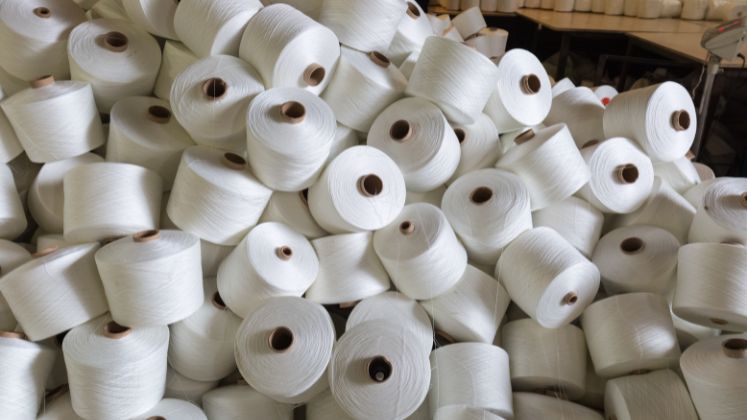Bangladesh’s restrictions on importing yarn from India through land ports have had little impact on overall inflows, as traders have quickly shifted shipments to sea routes.
Data from the National Board of Revenue (NBR) shows yarn imports from India fell by only 230,000 kilograms in the three months after the April ban compared with the preceding three months. Before the restrictions, monthly imports averaged 50 million kilograms; this fell to about 40 million in May and June, but surged again in July to over 53 million kilograms.
Textile entrepreneurs said yarn shipments through land ports were often misdeclared, with higher-count yarn smuggled in alongside lower grades, hurting local mills. The suspension of land port imports curbed such irregularities and boosted demand for domestically produced yarn. Industry leaders, however, stressed that stricter monitoring—including yarn count testing at Chattogram port—will be essential to fully eliminate malpractice.
The Ministry of Commerce halted yarn imports through Benapole, Bhomra, Sonamasjid, Banglabandha, and Burimari land ports on April 15, following complaints from mill owners. The decision came just days after India withdrew facilities for Bangladeshi goods to use its ports for third-country transhipment. India has since imposed several phases of export restrictions on various goods, including garments, jute, food products, and plastics.
Despite the restrictions, India remains Bangladesh’s top source of yarn. Between January and July, Bangladesh imported 720 million kilograms of yarn worth US $ 2.2 billion. Of this, 47% came from India, followed by 38% from China. Imports from India mainly originate from Karnataka, Tamil Nadu, and Gujarat.
Industry insiders note that while importing via sea ports takes 20–25 days, compared to a week through land routes, shipping is cheaper. Indian exporters also receive cash incentives, enabling them to sell yarn at lower prices than local producers.
Khorshed Alam, director of the Bangladesh Textile Mills Association (BTMA), said the industry never sought a full ban on Indian yarn. “We only wanted the import of higher-count yarn under false declarations to stop. Now that loophole is closed, and local mills are seeing better sales,” he said.
Bangladesh has 519 spinning mills that supply 85–90% of yarn used in knitwear and about 40% for woven fabric. But rising energy prices and chronic gas shortages have raised production costs, putting local mills at a disadvantage.
Mohammad Hatem, president of the Bangladesh Knitwear Manufacturers and Exporters Association (BKMEA), warned that longer shipping times are hurting competitiveness. “The main reason yarn is coming from India is price. Their yarn is 20–30 cents per kilogram cheaper. For one of my orders, Indian yarn cost US $ 2.12 per kilogram, while the local equivalent was US $ 2.65,” he said.
He added that decisions on yarn imports must take the interests of garment exporters into account, not just those of mill owners.







